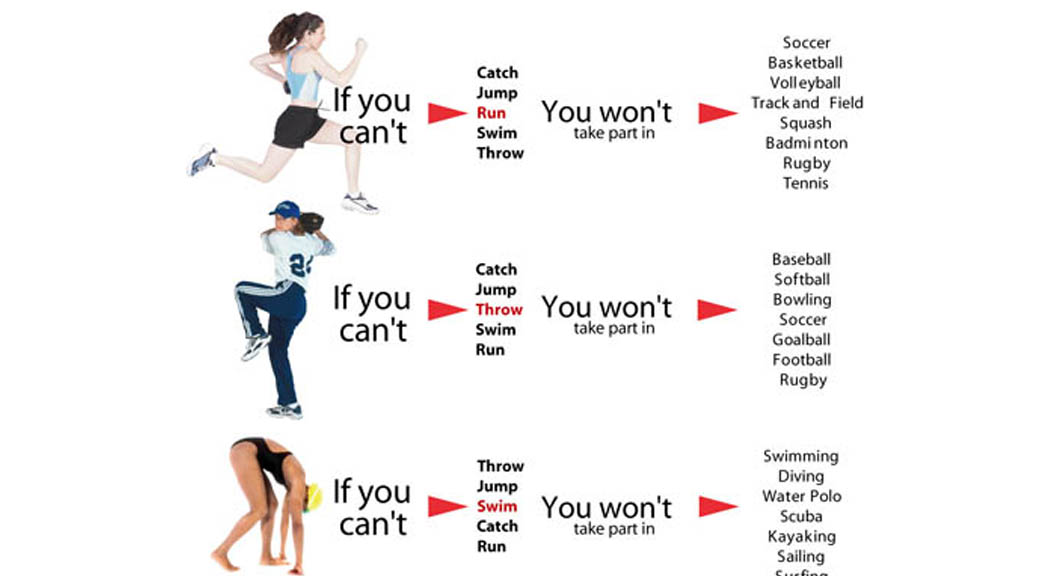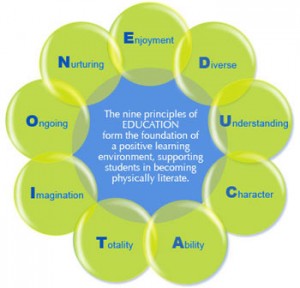What is Physical Literacy?
Physical and Health Education Canada defines physical literacy as:
Individuals who are physically literate move with competence and confidence in a wide variety of physical activities in multiple environments that benefit the healthy development of the whole person.
- Physically literate individuals consistently develop the motivation and ability to understand, communicate, apply, and analyze different forms of movement.
- They are able to demonstrate a variety of movements confidently, competently, creatively and strategically across a wide range of health-related physical activities.
- These skills enable individuals to make healthy, active choices that are both beneficial to and respectful of their whole self, others, and their environment.
Why is it important?
Research has shown that being physically active later in life depends on an individual’s ability to feel confident in an activity setting. That confidence most often comes from having learned fundamental movement and sport skills, or physical literacy, as a child. Research has also shown that without the development of physical literacy, many children and youth withdraw from physical activity and sport and turn to more inactive and/or unhealthy choices during their leisure time (CS4Life).
Quality physical education programs offer the best opportunity to foster the development of physical literacy for all children and youth given their mandate to provide equal and equitable access to the development of the skills, knowledge, and attitudes needed to become physically literate. Although each province has its own unique physical education curriculum, there are many common principles that are consistent with fostering physical literacy through a quality physical education program. These principles are consistent with PHE Canada’s Quality Daily Physical Education (QDPE) program and are rooted in previous evidence-based research.
“Almost fifty years ago, Ted Shawn, the renowned dance choreographer and performer, made an appeal for a physical literacy focus in PE. He wrote:
I hope that the day comes when all children, from their first start in the primary grades, learn to use human movement as a language equally and along with their learning to communicate by speech and by writing. We would then have in a few generations a physically “literate” adult population; for today, in spite of “physical education” (which confines itself largely to teaching athletic sports) we have mostly physical illiteracy- only one in a million can communicate and read communications through gesture (1965, pp. 89-90).” (Robinson & Randall, pg. 241, 2013)
Read this article: Physical Literacy Concept Paper Madigo et al. http://canadiansportforlife.ca/sites/default/files/resources/Physical%20Literacy%20Concept%20Paper.pdf
Physical Literacy Educational Strategies


